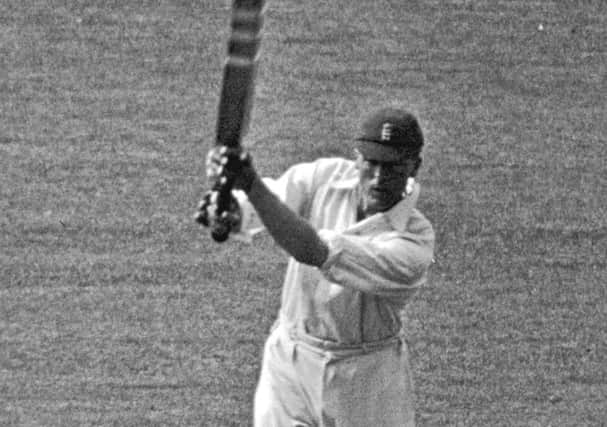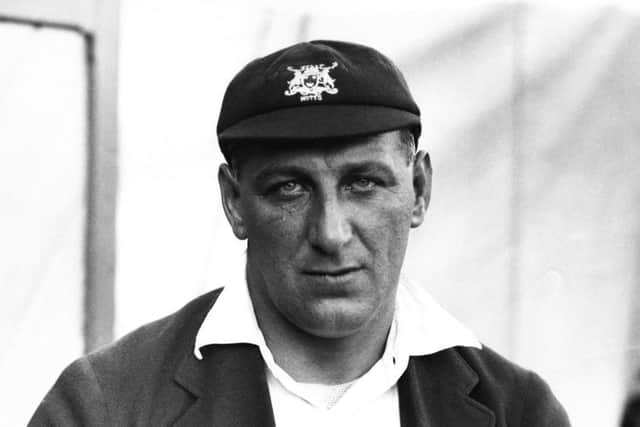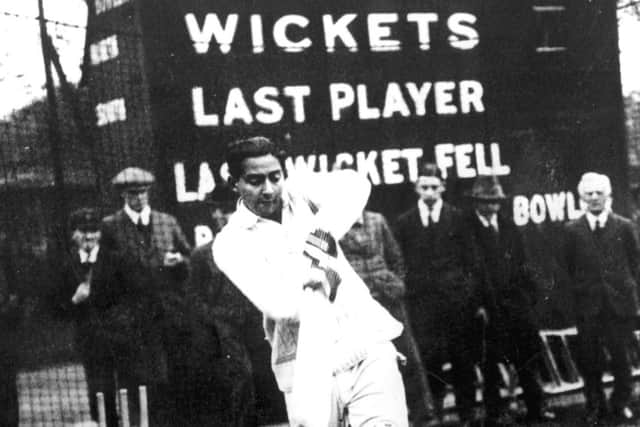When England played two Tests on the same day


It was notable not only for the fact it was their first Test visit, but also because it was one of two England Test tours that happened simultaneously.
While Harold Gilligan’s side were in New Zealand, Freddie Calthorpe’s men were in the West Indies.
Advertisement
Hide AdAdvertisement
Hide AdFor just under two hours – albeit on different days due to the time difference – England played two Test matches at exactly the same time when the final session of one day’s play in the Caribbean coincided with the first session of another in the land of the long white cloud.


“Hey, that sounds like a great idea,” you can almost hear the present administrators saying to themselves.
“Yeah, why don’t we cram in even more international games by allowing countries to field two teams at once?”
Perhaps best not to give these characters too many bright ideas; after all, The Hundred (turns away from standard issue Yorkshire Post laptop and spits violently) is proof of what can happen when our administrators get too many bright ideas.
Advertisement
Hide AdAdvertisement
Hide AdBut the events of 1929-30 were motivated not by a desire to cram in yet more games, and pull in more cash, but rather because New Zealand and West Indies had recently been elected to the Imperial Cricket Conference (forerunner of today’s International Cricket Council), which made them eligible to play in Tests.


MCC, under whose banner England played abroad until 1977, had wanted to send sides out as soon as possible but were constrained by existing commitments in Australia and South Africa, hence the idea for two tours at once.
With West Indies viewed as the stronger opposition, having impressed in unofficial fixtures in the early 1920s, and with England’s first-choice players mostly unwilling to spend more time away following a seven-month Ashes tour the previous winter, England effectively sent a ‘B’ team to the Caribbean and a ‘C’ team to New Zealand.
The ‘B’ team managed a 1-1 draw – the fourth and final Test in Jamaica was infamously drawn when captain Calthorpe chose not to enforce the follow-on despite a lead of 563, his side having to leave to catch the boat home.
Advertisement
Hide AdAdvertisement
Hide AdBut the ‘C’ team won their own four-match series 1-0, triumphing by eight wickets in the first Test in Christchurch, where Surrey pace bowler Maurice Allom took four wickets in five balls on debut, including the hat-trick.
England’s squad for New Zealand consisted of 14 players, only one of whom had more than one cap.
Frank Woolley, the legendary Kent all-rounder, had won 55 of them, but the only others with international experience were batsman Kumar Duleepsinhji and all-rounder Ted Bowley, both of Sussex, plus Nottinghamshire pace bowler Fred Barratt and Kent batsman Geoffrey Legge.
Gilligan was one of nine uncapped, the 33-year-old Sussex batsman having been appointed captain after his younger brother, Arthur, withdrew on health grounds.
Advertisement
Hide AdAdvertisement
Hide AdHarold Gilligan’s appointment was seen more as reward for his service to the game than particularly deserving in a cricketing sense, while it also helped that he was, as Wisden Cricketers’ Almanack put it, “a diplomat of considerable ability”.
For New Zealand, the visit of Gilligan and his players was significant because previous English teams had toured there only on an unofficial basis, having been in Australasia for the Ashes.
These unofficial matches provided a relaxed conclusion to an otherwise intense few weeks and also gave locals the chance to watch and play against English talent.
This time, England were touring not as an adjunct to the Ashes but in acknowledgment of the fact that New Zealand had joined Test cricket’s top table.
Advertisement
Hide AdAdvertisement
Hide AdEven so, they still travelled there via Australia, where they played against five different states, Wisden’s tour account actually concentrating more on those games than the New Zealand Tests.
Indeed, the cricketer’s bible declared that “the big performance of the tour was the triumph over South Australia at Adelaide by 239 runs, after the home side had led by 91 on the first innings”.
Woolley led the way on that occasion with a second innings century, Barratt and Allom then taking five wickets each to complete the win.
After Allom’s four-wickets-in-five-balls burst in the first Test in Christchurch, the highlight of a low-scoring game completed in two days, the second fixture in Wellington was drawn.
Advertisement
Hide AdAdvertisement
Hide Ad“Showing greatly improved form, New Zealand had much the best of a drawn match,” said Wisden, “scoring 604 runs for fourteen wickets while England made 427 for the loss of the same number of batsmen – a difference of 177 in the aggregates.”
Two of the scheduled three days of the third Test in Auckland were washed out, so an extra fourth Test was arranged to compensate the authorities.
That, too, was drawn after being dominated by the bat, ensuring that Gilligan’s men left with the series spoils.
Woolley was the standout player of the tour, averaging 51 with the bat and taking 68 wickets. “The great run-getter of the team was Duleepsinhji,” wrote Wisden, “who, playing a lot of delightful cricket, registered 1,421 runs with an average of 59.”
Advertisement
Hide AdAdvertisement
Hide AdAnd so the tour passed into history – the series rendered interesting mainly for the fact that England were also playing out in the West Indies.
On their way home, Gilligan’s team sailed close to the Caribbean, arriving back in Southampton on the opening day of the final Test in Jamaica.
Happily, the two-tours-at-the-same-time idea never took off.
Within weeks, everyone’s attention was back on the “real stuff”, the Ashes, as Australia won 2-1 in England in the summer of 1930.
Advertisement
Hide AdAdvertisement
Hide AdNew Zealand’s next Test matches – and their first overseas – came against England the following year.
So well did they perform in the only originally scheduled Test at Lord’s, which was drawn, that a further two matches were hastily arranged.
England won the first of those at The Oval by an innings and 26 runs, but play in the third game at Old Trafford only started at 3pm on the third and final day after a trademark deluge from the Manchester heavens.
Some 90 years later, the two countries go into this week’s Test – the first of a two-match series – having played 103 Test matches against each other.
England have won 48, New Zealand 10 and 45 fixtures have been drawn.
Messrs Joe Root and Kane Williamson, it’s over to you...